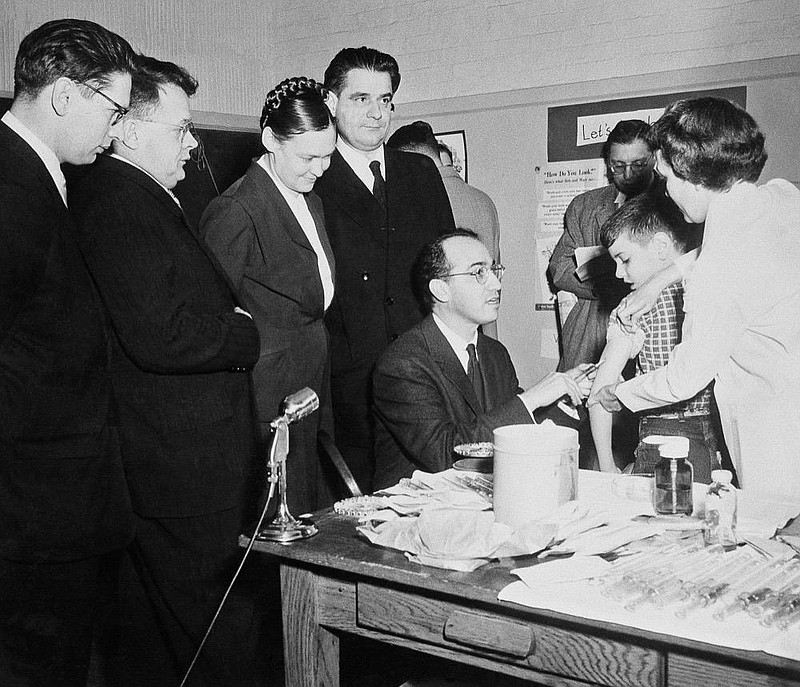Social distancing is a new concept for Americans born in the 21st century and late 20th century, but it was a practice rigidly used by diligent parents as recently as the early 1950s during the scourge of a different virus.
We know polio today as a vaccine-preventable illness caused by the poliovirus that has been eliminated in all but a few countries, but that was not the case in the U.S. less than 70 years ago.
A man of a certain age reminded us of that recently in a conversation about today's social distancing surrounding the outbreak of the coronavirus in this country.
"Mother wouldn't let us go to the pool," he said of his childhood in the early 1950s, "and the lake? That was out of the question."
So, yeah, social distancing? Americans have done that before in taking precautions against a virus and by doing so cut down on its spread. We can do it again, though we can agree it's neither fun nor convenient. But if doing so helps prevent hundreds of thousands of deaths of our neighbors, we should do so gladly.
Seventy years ago, polio was one of the most feared diseases in the U.S. As the weather warmed each year, the panic of parents rose. For the poliovirus, unlike the coronavirus, found most of its victims in children and young adults - 72.2% below age 20, according to a 1949 report. And like the coronavirus, polio was highly contagious.
Although the poliovirus had caused paralysis and death for much of human history, major epidemics didn't begin occurring until the late 19th and early 20th centuries. By 1910, frequent epidemics were regular summer occurrences throughout the developed world.
The disease took on additional prominence in the 1930s and 1940s when U.S. President Franklin D. Roosevelt acknowledged he had polio, having contracted it 12 years before taking office. But he concealed the extent of his disability from the American people.
At its peak in the 1940s and early 1950s, polio would paralyze or kill more than a half million people worldwide annually.
Do you remember?
Do you remember the precautions taken to minimize the spread of the polio virus? If so, we’d like to read your personal recollections on what you or your family did or what you recall about Chattanooga during the late 1940s and early 1950s. Email them to Clint Cooper at ccooper@timesfreepress.com. We may run some of the responses in an upcoming issue.
In 1952 alone, according to NPR, nearly 60,000 children were infected with the virus, the most in any year. Thousands were paralyzed, and more than 3,000 died. It hit rich and poor, black and white.
Chattanooga Free Press headlines from that year told the grim, almost daily tale: "Hixson Girl 110th Polio Case Here," "Negro Girl Becomes 109th Polio Victim," "10-Month-Old Stricken With Polio," "Rossville Boy, 4; Bulbar Polio Victim."
Although a cure was only two years away, that was unknown to public health officials, whose warnings that summer were a combination of common-sense cleanliness habits and a sort of practical social distancing warning.
On July 4, when many Chattanoogans would be heading for pools and lakes, Mrs. William Fritts, executive secretary of the Hamilton County chapter of the National Foundation for Infantile Paralysis, listed precautions in a Free Press report: "Keep children with their own friends. Keep them away from people they have not been with right along especially in daily contact." She also suggested they not get overtired by work, hard play or travel, that they not get chilled and that they keep clean.
"Wash hands carefully before eating and always after using the toilet," she recommended. "Hands may carry polio infection into the body through the mouth."
A pamphlet by the same organization three years earlier had recommended avoiding crowds, getting overfatigued, swimming in polluted waters, or sudden chilling, and advised practicing cleanliness.
Late summer, according to NPR, was dubbed polio season. Public swimming pools were shut down. Movie theaters urged patrons not to sit too close together to avoid spreading the disease (today's 6-foot recommendation). And insurance companies sold polio insurance for newborns.
Then U.S. President Harry Truman, as President Donald Trump has today with the coronavirus, called on citizens to rally together to defeat polio.
"The fight against infantile paralysis cannot be a local war," he said in a speech broadcast from the White House. "It must be nationwide. It must be total war in every city, town and village throughout the land. For only with a united front can we ever hope to win any war."
Locally, Dr. Harold J. Starr, then chief of staff at T.C. Thompson Children's Hospital, provided advice that was sound then and is apropos today.
"Remember," he said, "facts fight fears. Half or more of those having the disease show no after-effects. A happy state of mind tends toward health and recovery. Don't let your anxiety or fear reach your children. Your confidence makes things easier for you and for others."
Again, we've been here before. We'll get through this.
